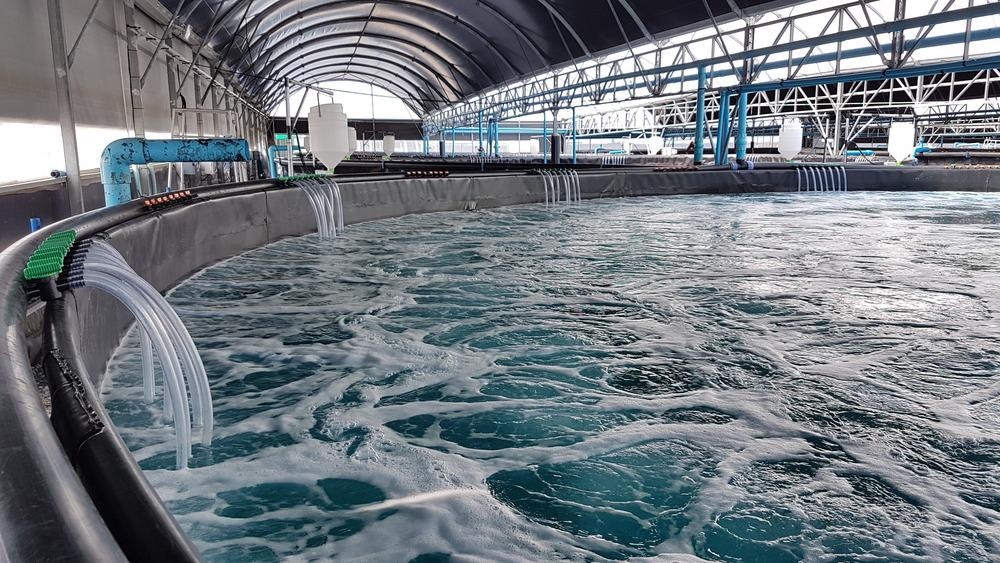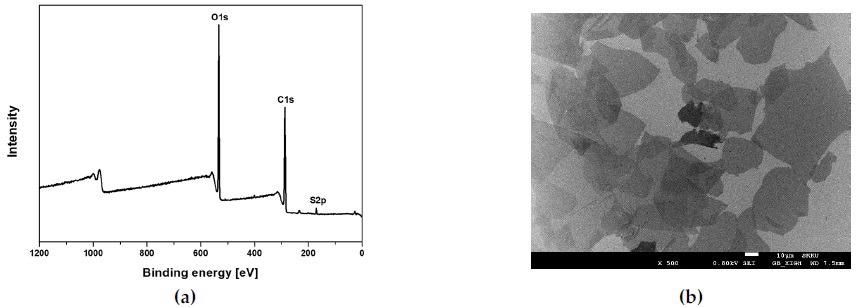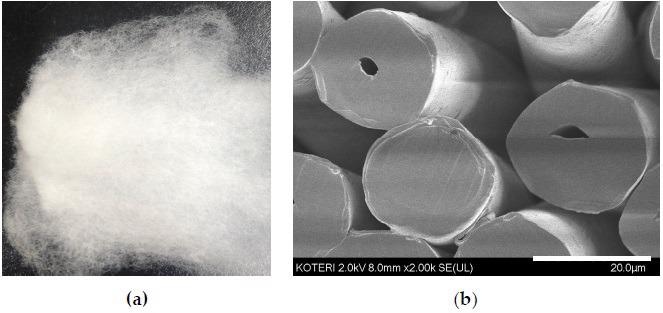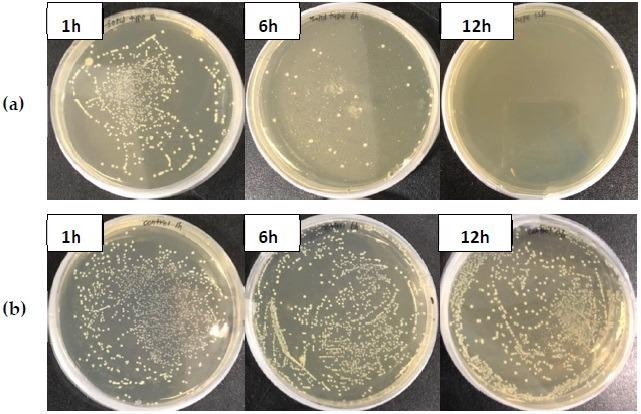To meet the demands of the domestic aquaculture industry, researchers are currently focusing on improving current water purification techniques. Writing in the journal Materials, a team of researchers has presented a study on the effectiveness of antimicrobial effects of graphene oxide polyester fibers on pathogenic bacteria that affect fish stocks.

Study: Evaluation of the Antimicrobial Effect of Graphene Oxide Fiber on Fish Bacteria for Application in Aquaculture Systems. Image Credit: Anirut Krisanakul/Shutterstock.com
The Importance of Domestic Aquaculture
Ensuring food security for the global population in the face of climate change is crucial. Whilst the oceans have historically contained abundant resources, overfishing has led to the depletion of fish stocks and the fishing industry has caused huge environmental damage to fragile marine ecosystems. Additionally, pollution from effluence and industrial waste contaminates marine ecosystems, with harmful contaminants entering the food chain.

Analysis of the graphene oxide by (a) X‐ray photoelectron spectroscopy (XPS) and (b) scanning electron microscope (SEM). Image Credit: Lee, J.H. et al., Materials
The aquaculture industry, including the domestic aquaculture industry, is growing rapidly. Aquaculture has several benefits, including preserving natural ecosystems and biodiversity, supplementation of wild stock, health benefits, employment opportunities, and ease of availability. The global aquaculture industry was valued at $285.359.7 million in 2019, with the market value projected to reach $378,005.5 million by 2027 according to some sources.
Domestic Aquaculture: Challenges
Aquaculture systems are designed as “flow-through” systems, with water consistently flowing through and being discharged in copious quantities. The constant flow of water provides the marine organisms with oxygen and disposes of waste.
It is the amount of wastewater produced and its composition that is the main issue with aquaculture system design. Additionally, the continued expansion and development of aquaculture farms is cause for concern. Wastewater produced by aquaculture farms contains significant levels of organic waste, pathogenic bacteria, fish carcasses, residual antibiotics, and drug-resistant bacteria. The presence of pathogenic bacteria in particular is a driver of economic losses in aquaculture.
Sterilization Strategies
To ensure the safe operation of domestic aquaculture farms and prevent economic losses from infected stocks, along with reducing environmental pollution, sterilization of wastewater is a key element of a farm’s processes.
Multiple strategies have been developed over the years, each with its own pros and cons. Systems using ultraviolet, high temperature, high-pressure and ionic techniques are inefficient, complex, and costly to manufacture and maintain. Physical filtration methods such as Microfiber and nanofiber-based systems are cost-effective, chemical-free, and environmentally friendly, but microorganisms can become trapped and multiply. This facilitates the inclusion of antimicrobial drugs, which carries the danger of creating antibiotic-resistant bacterial strains.
Therefore, there is a need to create a filtration and sterilization method that is cost-effective, environmentally friendly, chemical-free, and does not risk the proliferation of microbes and the dangers of breeding drug-resistant microbes. Studies have been ongoing in recent years to find alternative materials for this purpose.

Graphene oxide polyester fiber (a) and its cross‐sectional shape (b). Image Credit: Lee, J.H. et al., Materials
Graphene Oxide
Due to its intriguing properties, graphene oxide (GO) has emerged as a candidate for this application. Additionally, this material is inexpensive, easy to manufacture, and possesses superior antimicrobial properties.
Graphene oxide has a two-dimensional honeycomb structure. Oxygen can be held at the basal planes and the edges of the material, and the basal plane is composed of hydroxyl and carboxyl groups, which contain hydrophilic structures. The material interacts with biomolecules and envelops bacteria, isolating them from the surrounding environment. The antimicrobial action of graphene oxide is linked to both a limitation in available nutrients for the bacteria and the reduction of graphene oxide carbon radicals on the cell membrane surface, which induces dialysis.
Whilst products that utilize the antimicrobial properties of graphene oxide are already being developed for commercial use, thus far the effect on fish diseases has not been widely studied.
The Study
The study published in Materials has investigated the antimicrobial effects of graphene oxide-polyester fibers against seven species of bacteria that are pathogenic to fish: Vibrio scophthamli, Aeromonas hydrophilia, Vibrio harveyi, Streptococcus iniae, Streptococcus parauberis, Photobacterium pisciola, and Edwardsiella tarda. These bacterial species cause significant economic loss in the aquaculture industry.
The results of the study demonstrated that the prepared graphene oxide polyester fibers were 99% effective against non-motile pathogenic bacteria, with no change observed in the control group. However, the team did not observe an antimicrobial effect on V. hareyi, E. tarda, or V. scophthamli. The authors have suggested that this was due to no bacteria being caught in the fibers. These bacteria are highly motile, and due to this the dialysis action of graphene oxide carbon radicals may not have been as effective.

Growth of Streptococcus parauberis on TSA plates incubated with graphene oxide polyester fiber for 1, 6 and 12 h. (a) GO fiber, (b) control. Image Credit: Lee, J.H. et al., Materials
Because of this, the authors suggested that a new complementary method for these bacteria may be necessary. Additionally, the maximum contact time with bacteria in the study was 12h, so a longer contact time or higher graphene oxide concentration may be necessary to deal with motile bacterial species. In contrast, the antimicrobial effect on A. hydrophila with flagella was 100%.
The authors have stated that the results of the study are the first to quantify the antimicrobial action of graphene oxide on species of bacteria pathogenic to fish, and as such they display the potential of the material for use in domestic aquaculture water treatment systems or breeding tanks.
Further Reading
Lee, J.H. et al. (2022) Evaluation of the Antimicrobial Effect of Graphene Oxide Fiber on Fish Bacteria for Application in Aquaculture Systems [online] Materials 15(3) 966 | mdpi.com. Available at: https://www.mdpi.com/1996-1944/15/3/966
Disclaimer: The views expressed here are those of the author expressed in their private capacity and do not necessarily represent the views of AZoM.com Limited T/A AZoNetwork the owner and operator of this website. This disclaimer forms part of the Terms and conditions of use of this website.